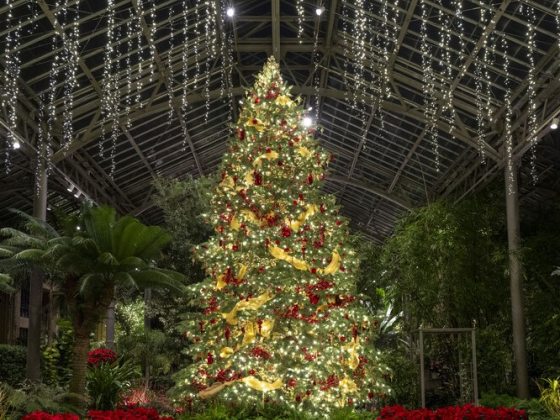
Featured Bloom
Christmas Tree 2025
An extravagant rotating 24-foot white fir (Abies concolor) illuminated with warm white lights, decorated with red rubies with gold ornaments, and a swath of ornate garland in red and gold. Oversized red acrylic gems glisten as the tree gracefully spins. An exquisite decorated tree that will no doubt put all in a festive mood mood!
See what’s in bloom … and enjoy the beauty of our Gardens.
-
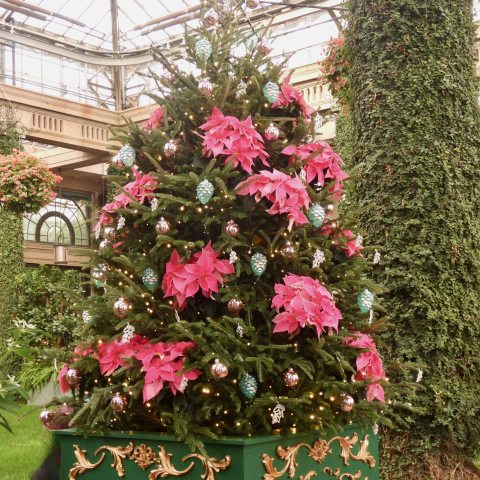
Floral Tree
Euphorbia pulcherrima 'Bonpri 1647' (Princettia Queen Shell Pink)Floral Trees are cut green trees with added customized hardware constructed to support flowering plants like poinsettias or begonias which are carefully placed among the branches. The irrigation for the flowering plants is integrated in the structure. Longwood staff have designed and developed this form.
-
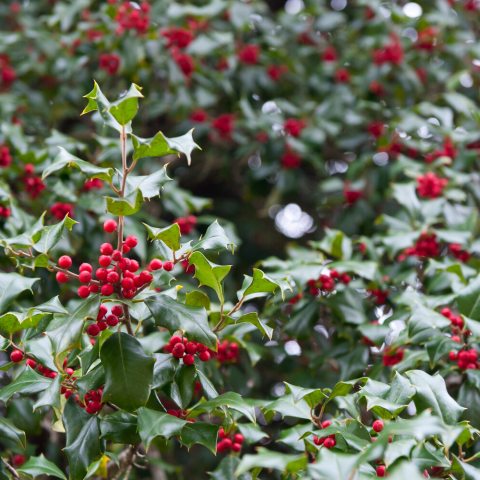
American Holly
Ilex opacaThis pyramidal tree, with spiny evergreen foliage, will grow up to 50 feet tall. Starting in October, the female trees of this US native produce red berry-like fruit that persist into winter, providing an important food source in the late fall and winter to birds and mammals. A nearby male pollinator is necessary for fruit production. American holly grows well in acidic, well-drained soil and will tolerate most light conditions, but prefers full sun and protection from the wind. Like most fruiting hollies, it is a traditional favorite in winter holiday decorations and displays.
-
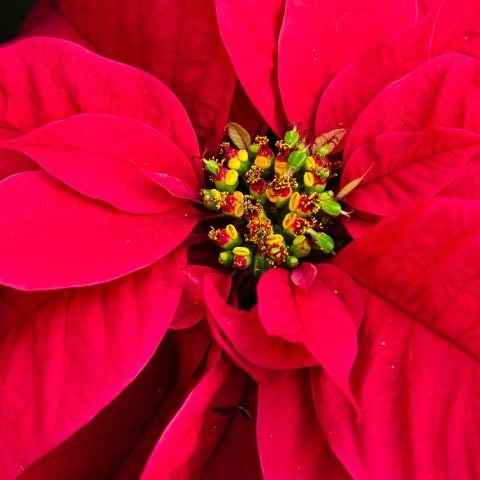
Poinsettia
Euphorbia pulcherrima 'Santa Claus Red'The poinsettia was introduced to this country from Mexico in 1825 by Joel Poinsett. The botanical name for the poinsettia is Euphorbia pulcherrima, meaning the most beautiful Euphorbia. The showy colored parts of poinsettias that most people think are the flowers are colored bracts (modified leaves). Poinsettias are cold sensitive, so they cannot be used in cold drafty areas. Poinsettias are not poisonous, although they can cause an upset stomach if eaten. We use a variety of Euphorbia species and cultivars in the Christmas display and throughout the year, and in the permanent plantings collection.
-
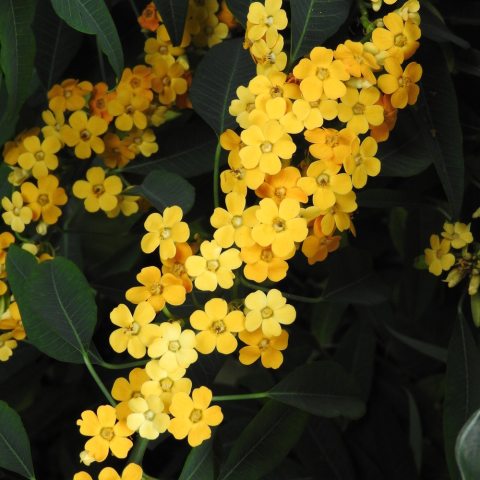
Scarlet-plume
Euphorbia fulgens ′Algevo′Euphorbia fulgens ′Algevo′ is a member of the family Euphorbiaceae, a family of plants known best for their unique pseudo flowers called cyathia. What looks to be a single, normal flower is actually a cup-like structure resembling petals, which holds nectar glands, one extremely reduced female flower, and multiple male flowers. All Euphorbia have a milky latex used to deter herbivores, Contrary to belief, the are not poisonous, although they can cause an upset stomach if eaten. and due to this they should be handled with care.
-

Amaryllis
Hippeastrum 'Double King'Amaryllis is widely recognized as a classic holiday flowering plant, especially in winter and around Christmas. It belongs to the Amaryllidaceae family and is native to South Africa, where its natural growth cycle has made it well suited to winter blooming in cultivation. Grown from a large bulb, amaryllis is valued for its tall, upright stems and large, trumpet-shaped flowers, which provide vibrant color indoors when few other plants are in bloom. Botanically, most holiday “amaryllis” sold commercially are actually Hippeastrum, a closely related genus from South America, but the name amaryllis remains firmly associated with winter holidays and indoor flowering traditions. After flowering, allow the leaves to grow, and continue watering and feeding the plant so the bulb can store energy, then let it rest for about 8–10 weeks in a cool, dry place before being replanted to trigger the next bloom. Bulbs can last for years when stored correctly.
-
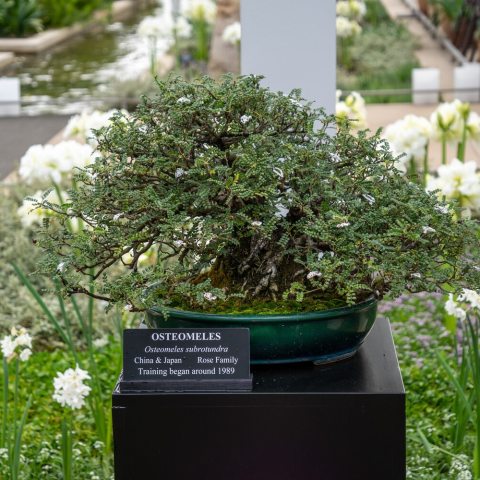
Osteomeles Bonsai
Osteomeles subrotundraOsteomeles subrotunda, also known as False Hawthorn, is an evergreen shrub, native to East and Southeast Asia, including parts of China, Japan, Korea, and Taiwan, where it often grows on rocky slopes and coastal areas. It has fern-like small, glossy, rounded leaves (which inspired the name subrotunda, meaning “almost round”), delicate white flowers, and tiny berry-like fruits that birds enjoy. One of its standout qualities is its resilience, tolerating wind, salt, pruning, and poor soils, making it popular in bonsai, hedges, and coastal gardens. A member of the Rose Family (Rosaceae), it looks like a hawthorn, but it’s actually a different genus. You can find a variety of our Bonsai trees on display in the West Conservatory.
-
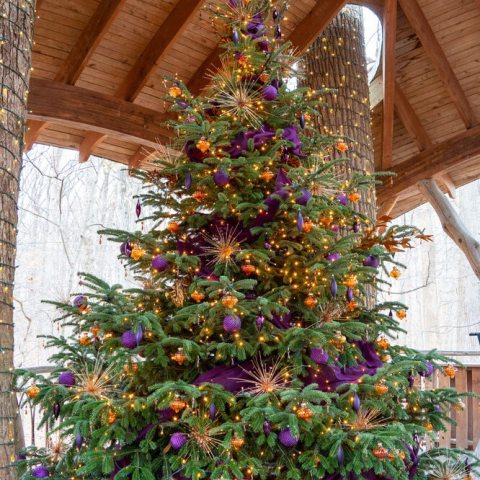
-
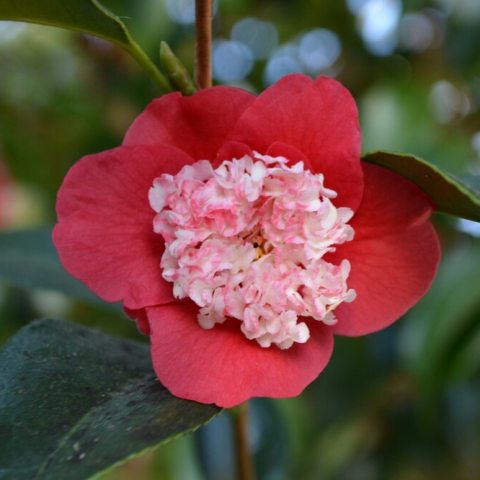
Japanese Camellia
Camellia japonica ′Bokuhan′Japanese camellias have glossy evergreen leaves and rose-like flowers in various shades of pink, red, and white that bloom at Longwood throughout the winter. These beautiful flowering shrubs were one of Pierre S. du Pont’s favorite flowers and one of the first species planted in the Conservatory upon its completion in 1921.
-
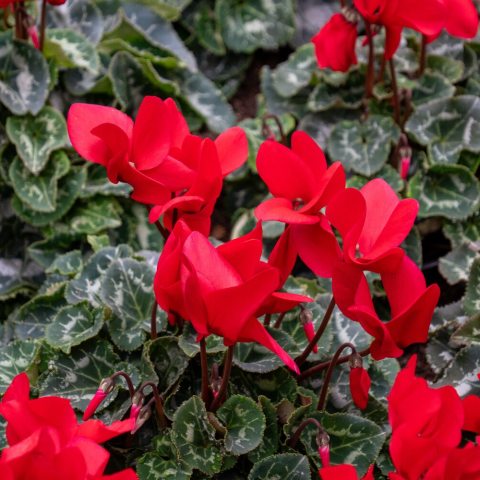
-
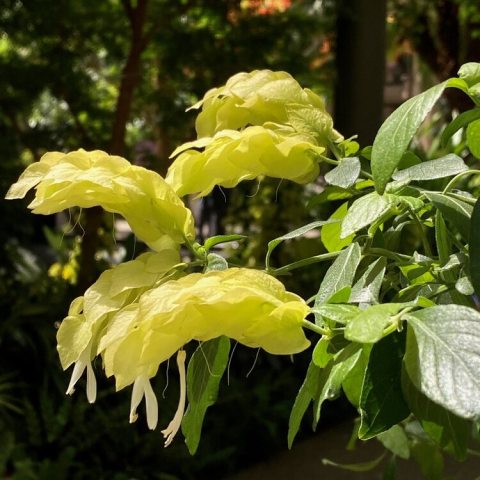
-

-
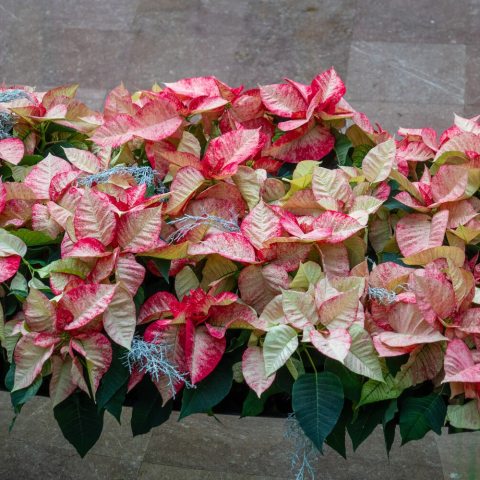
-
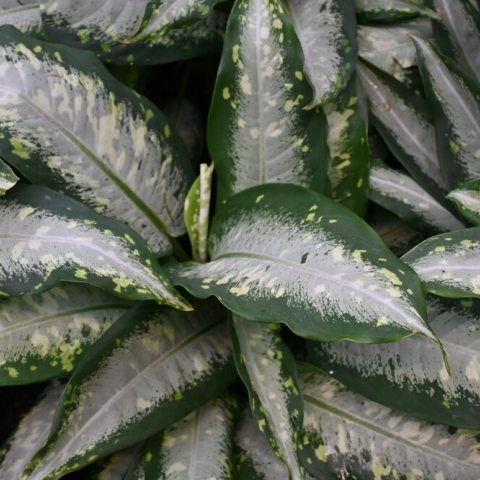
-

-
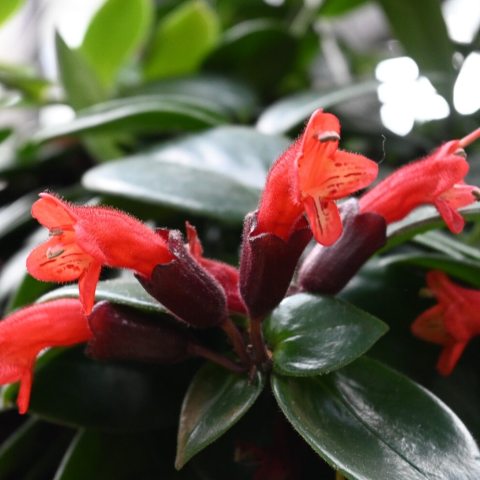
-

-
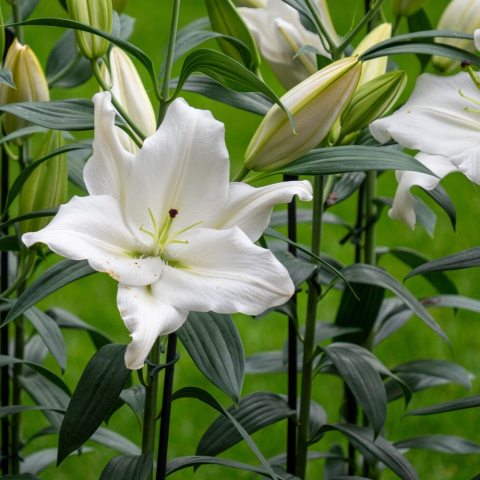
-
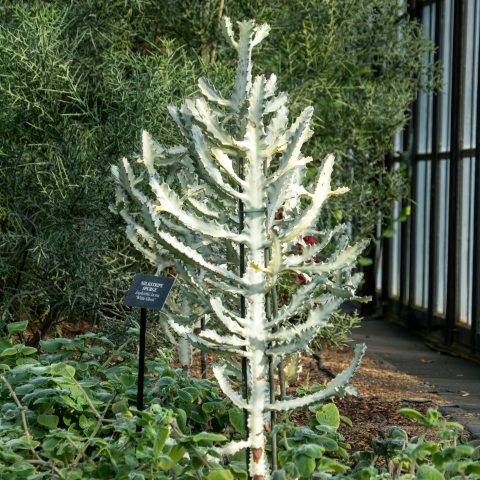
-

-
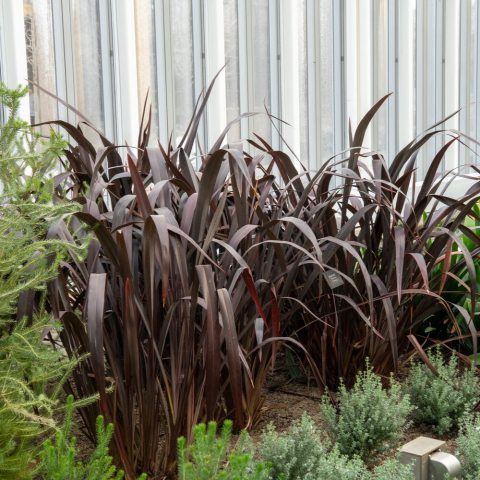
-

-

-
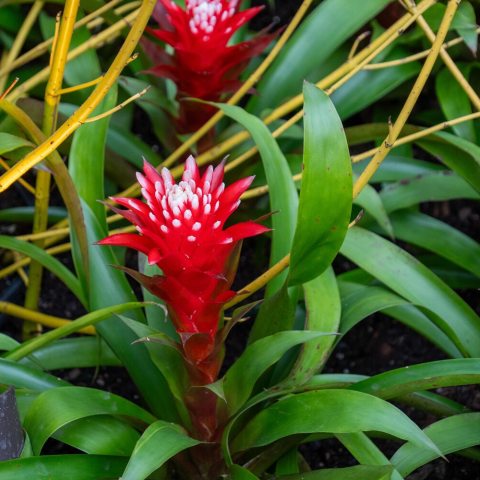
-
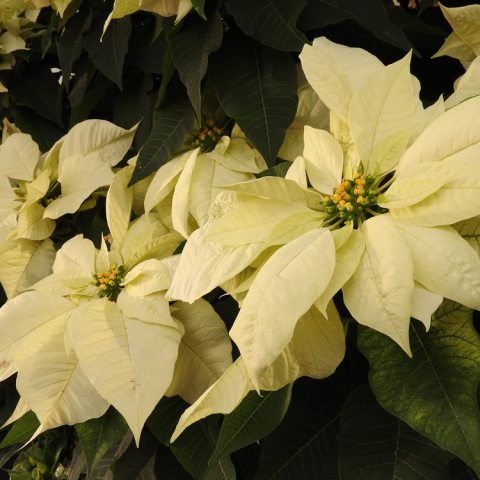
-
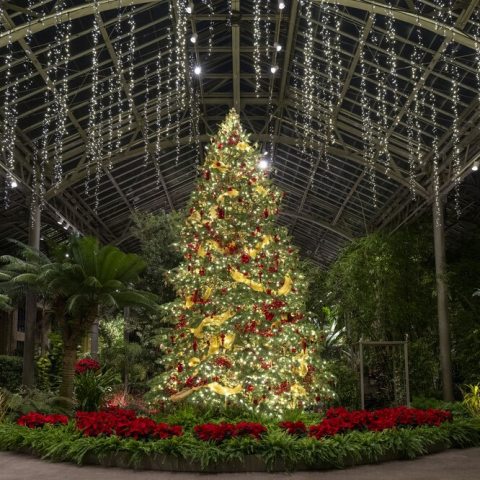
Christmas Tree 2025
Abies concolorAn extravagant rotating 24-foot white fir (Abies concolor) illuminated with warm white lights, decorated with red rubies with gold ornaments, and a swath of ornate garland in red and gold. Oversized red acrylic gems glisten as the tree gracefully spins. An exquisite decorated tree that will no doubt put all in a festive mood mood!